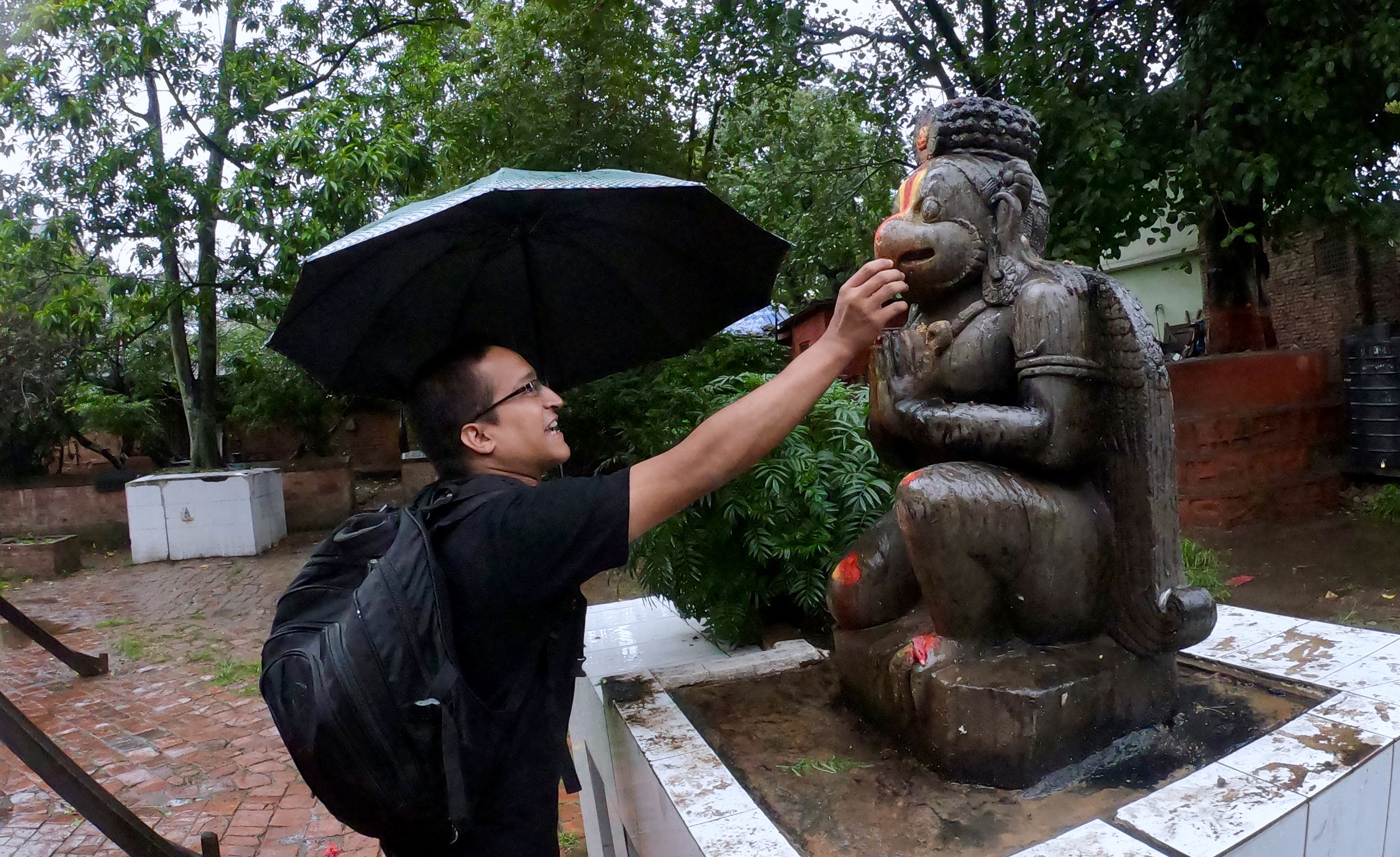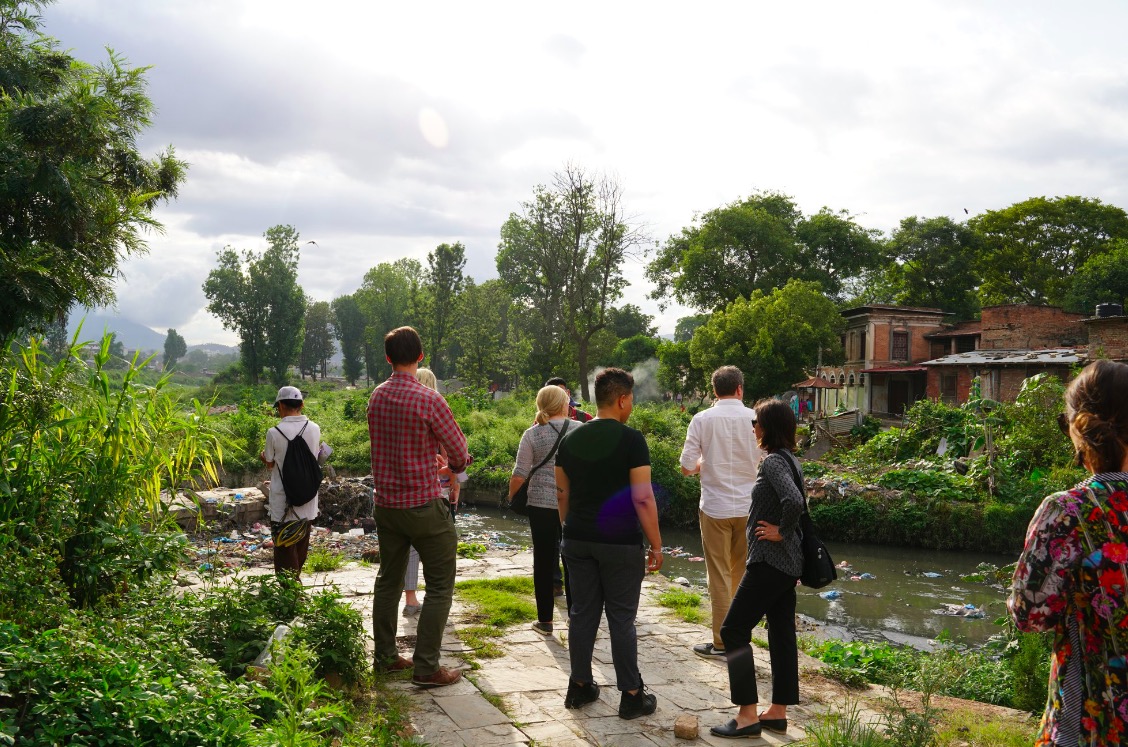Family of priests at Changu Narayan temple. He has been working for over 12 years in documenting rituals and other intangible heritages. Guiden us on how the iconography of religions help to depict the historical past and the present, as well as the future and the afterlife.
Iconography expert, Abhas Rajopadhaya led the walk with efforts to resemble the authentic information and convey the religious icons, visual images to the commuters. Walk conducted despite the heavy rainfall gave the essence of need for these sacred places to be away from the pollution.Religious icons are used to convey concepts concerned with humanity’s relationship to the sacred or holy and also to his social and material world. Other nonreligious types of icons achieved increasing significance in the 19th and 20th centuries, especially those dealing with human beings’ relationship to and conceptualization of the material world. Rational, scientific-technical icons have assumed ever-increasing importance in modern science and technology.
The emphasis on the depiction of historical past and the present, the cultural enthusiast found the walk the best on grounds with the walk leader turned the walk route to a mythical playground. The effort for awareness and realisation of the importance of these sites which bear great historical and cultural importance.

